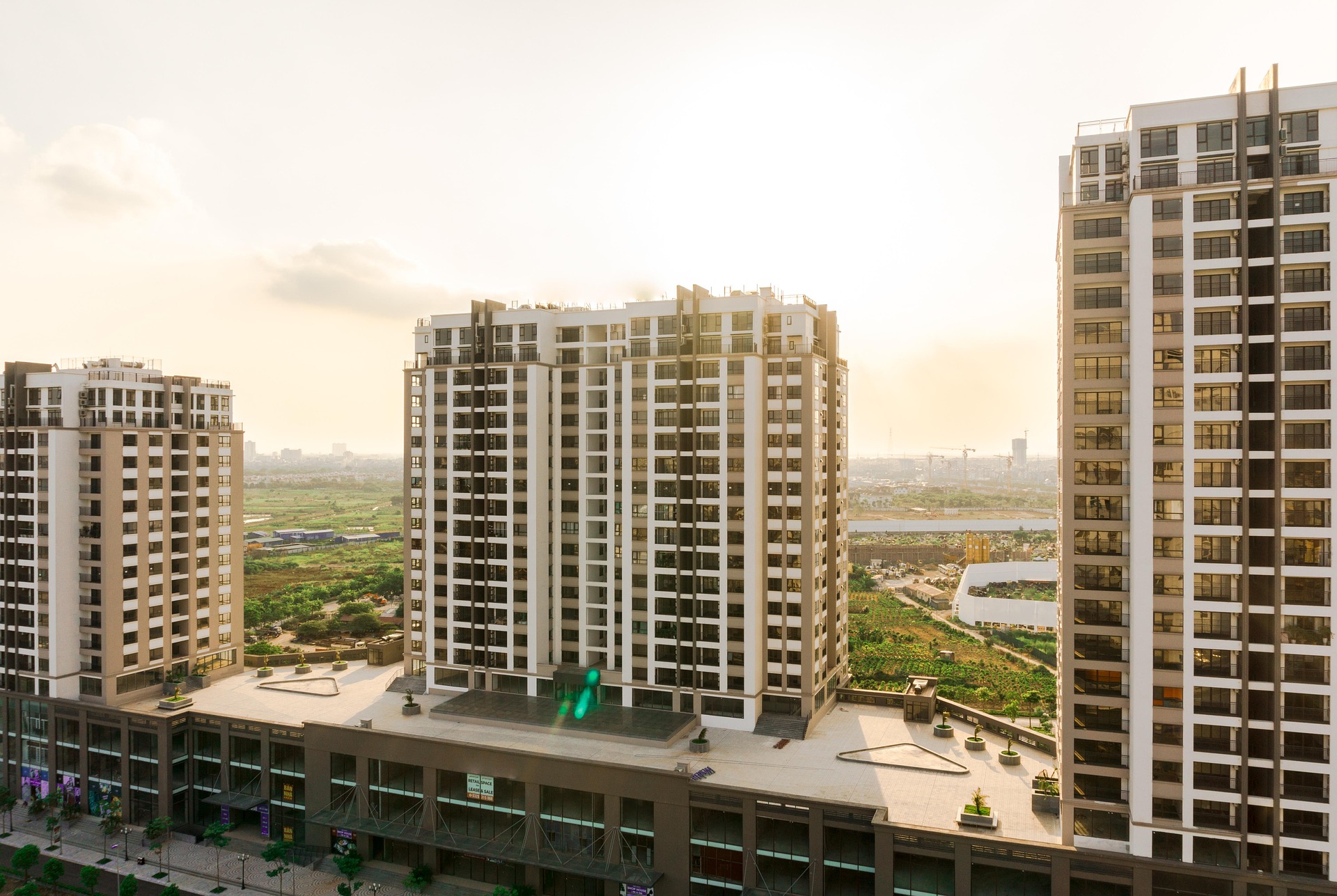1. Price Appreciation
-
NCR-wide: Residential prices surged by approximately 81%, rising from ₹4,580 per sq ft in Q1 2020 to around ₹8,300–8,330 per sq ft in Q1 2025 The Economic Times+12Baazcapital+12Aurum PropTech+12.
-
Greater Noida: Led growth with a 98% jump—from ₹3,340 to ₹6,600 per sq ft Hindustan Times+6The Indian Express+6Business Standard+6.
-
Noida: Property values climbed 92%, to ₹9,200 per sq ft from ₹4,795 The Economic Times+2Hindustan Times+2News9live+2.
-
Gurugram (Gurgaon): Grew by about 84%, reaching ₹11,300 per sq ft reuters.com+13The Indian Express+13Aurum PropTech+13.
-
Delhi proper: Remained the priciest within NCR at ₹25,200 per sq ft in 2025, though growth was relatively modest at 38% over five years Hindustan Times+2The Indian Express+2Aurum PropTech+2.
2. Inventory & Sales Dynamics
-
Unsold stock dropped sharply—from ~1.73 lakh units in Q1 2020 to ~84,500 in Q1 2025—a 51% reduction deepai.report+4The Indian Express+4Aurum PropTech+4.
-
City-level drops: Noida saw ~72% decline in unsold inventory; Ghaziabad ~58%; Greater Noida ~56% en.wikipedia.org+3The Indian Express+3Aurum PropTech+3.
-
Overhang ratio fell from 88 months in 2020 to just 17 months in 2025 The Indian Express+1Aurum PropTech+1.
3. Annual Price Growth
-
In 2024, NCR saw a 30% YoY increase, topping all major metros in India—rising from ₹5,800/sq ft in 2023 to ₹7,550/sq ft in 2024 The Economic Times+2Baazcapital+2Shakuntla Group+2.
2025 Market Trends & Drivers
Infrastructure-led Growth
Major projects like the Delhi–Meerut RRTS (fully operational by June 2025), Dwarka Expressway, UER‑II, FNG Expressway, and Metro Phase IV have significantly compressed commute times and elevated real estate demand along their corridors—lift yields of 15–30% observed en.wikipedia.org+2Shakuntla Group+2Baazcapital+2.
-
For instance, Dwarka Expressway saw property rates nearly double from ₹9,434/sq ft in 2020 to ₹18,668/sq ft by 2024, with 40–60% expected growth by 2030 Baazcapital+1The Times of India+1.
-
RRTS-driven areas like Ghaziabad and Meerut have seen 15–20% value uplift after line operations expanded into mid‑2025 Shakuntla Groupen.wikipedia.org.
Luxury & Premium Segment Surge
-
The share of homes priced at ₹1 crore+ surged to 62% of total sales in H1 2025 (up from 51% in H1 2024) The Times of India.
-
Ultra-luxury segments (₹2 cr+ or >₹5 cr) dominate, with luxury launch share rising from ~4% in 2020 to over 59% in 2024. Q1 2025 saw sales of ultra-luxury units jump by ~483% YoY Baazcapitaldeepai.reportreuters.com.
-
DLF’s premium project in Gurugram (Valued ₹11,000 crore) sold out in just one week in mid-2025, underscoring strong demand Baazcapital+2reuters.com+2The Times of India+2.
Affordability Challenges
-
The average loading factor (ratio of super-built to carpet area) rose from ~31% in 2019 to ~41% in Q1 2025, eroding usable space and value for buyers Baazcapital.
-
The steep price rise is outpacing income growth, prompting many first-time buyers to defer purchase, downsize expectations, or opt for rental markets deepai.report.
-
Rental inflation in Delhi NCR moderated to 7–9% in H1 2025—still high, but slower than the 12–24% annual hikes seen earlier The Economic Times.
Policy & Market Discipline
-
Developers are now curbing speculative buying by enforcing more diligent buyer vetting and transparent allotment systems to prioritize genuine end-users The Economic Times.
📊 Comparative Snapshot: 2020 vs 2025
| Metric | 2020 (Q1) | 2025 (Q1/early) | Growth / Trend |
|---|---|---|---|
| Avg. NCR Price (₹/sq ft) | ₹4,580 | ₹8,300–8,330 | +81% over 5 years |
| Greater Noida Price | ₹3,340 | ₹6,600 | +98% |
| Noida Price | ₹4,795 | ₹9,200 | +92% |
| Gurgaon Price | ~₹6,100* | ₹11,300 | +84% |
| Delhi Price | ~₹18,300* | ₹25,200 | +38% |
| Unsold Housing Inventory | ~173,000 units | ~84,500 units | −51% |
| Inventory Overhang (months) | 88 | 17 | Sharply improved |
| Annual Price Growth (2023–24) | — | +30% | Strongest among metros |
| Premium Segment Share (₹1 cr+) in Sales | ~51% (H1 2024) | 62% (H1 2025) | Rising preference |
| Rental Inflation (annual) | ~12–24% | 7–9% (H1 2025) | Cooling, but still elevated |
*Figures for Delhi and Gurgaon 2020 base estimated consistently across sources.
🔮 Outlook & Strategic Insights for 2025
-
Transit Corridors Remain Key
Focus on emerging zones around Dwarka Expressway, RRTS stations, UER‑II, and Jewar Airport—these infrastructure hubs continue driving appreciation and investor interest. -
Luxury and Premium Are the New Mainstream
With premium homes dominating market share and widespread appetite from HNI and NRI buyers, Delhi NCR is firmly luxury-led—but affordability remains a concern for mid-segment buyers. -
Moderating Growth Ahead
While price growth may moderate in 2025, experts forecast a still healthy 6–10% annual rise, particularly in premium corridors Aurum PropTech+4News9live+4Business Standard+4The Economic Times+6Baazcapital+6The Indian Express+6Aurum PropTech+1The Indian Express+1The Economic Timesen.wikipedia.org+1Shakuntla Group+1Shakuntla Group+1Aurum PropTech+1. -
Policy & Market Discipline Enhance Stability
Measures to discourage speculation and elevate transparency help support sustainable growth and lower risk of sudden bubbles The Economic Times.
✅ Conclusion
From 2020 to 2025, Delhi NCR’s real estate landscape transformed dramatically:
-
Residential prices soared by over 80% regionwide.
-
Peripheral zones like Greater Noida and Noida led growth, but even Delhi and Gurugram delivered strong returns.
-
Aging inventory reduced sharply, showing robust demand and project completions.
-
The premium housing segment now dominates the market, backed by infrastructure development and luxury preferences.
-
Yet concerns about affordability, especially for mid-tier buyers, remain palpable.
Despite a potential slowdown in price surge, metro-wide connectivity, high-end demand, and disciplined sales practices position NCR for steady growth and long-term value.



4 comments
Alexander Rees
We went down the lane, by the body of the man in black, sodden now from the overnight hail, and broke into the woods at the foot of the hill.
Ralph Davin
On our side the fire had done no more than scorch the nearer trees; it had failed to secure its footing. In one place the woodmen had been at work on Saturday; trees, felled and freshly trimmed, lay in a clearing, with heaps of sawdust by the sawing-machine and its engine.
Alexander Rees
We went down the lane, by the body of the man in blac, sodden now from the overnight hail, and broke into the woods at the foot of the hill.
Ralph Davin
On our side the fire had done no more than scorch the nearer trees; itt had failed to secure its footing. In one place the woodmen had been at work on Saturday; trees, felled and freshly trimmed, lay in a clearing, with heaps of sawdust by the sawing-machine and its engine.